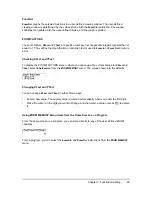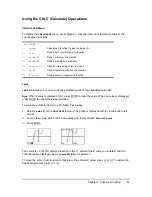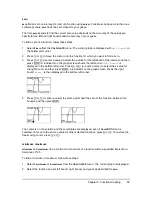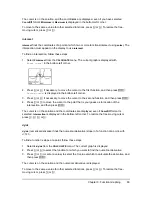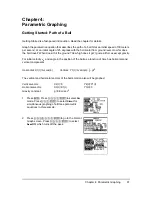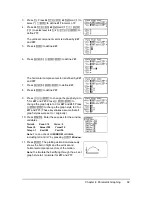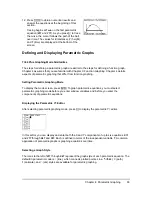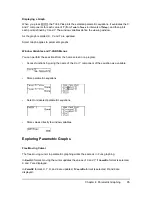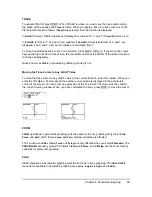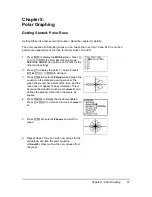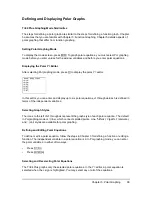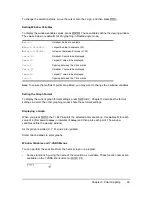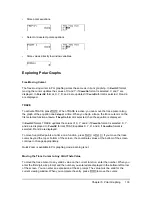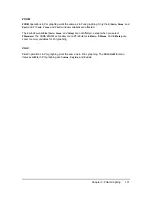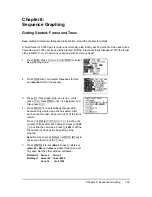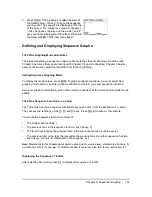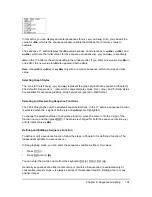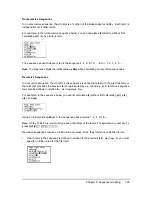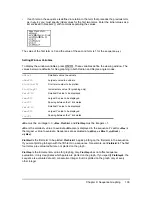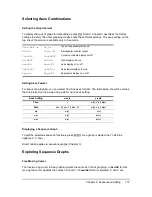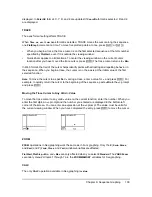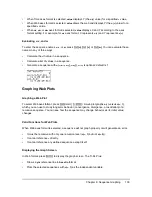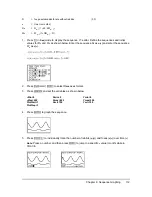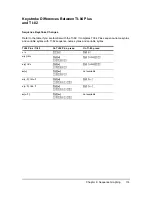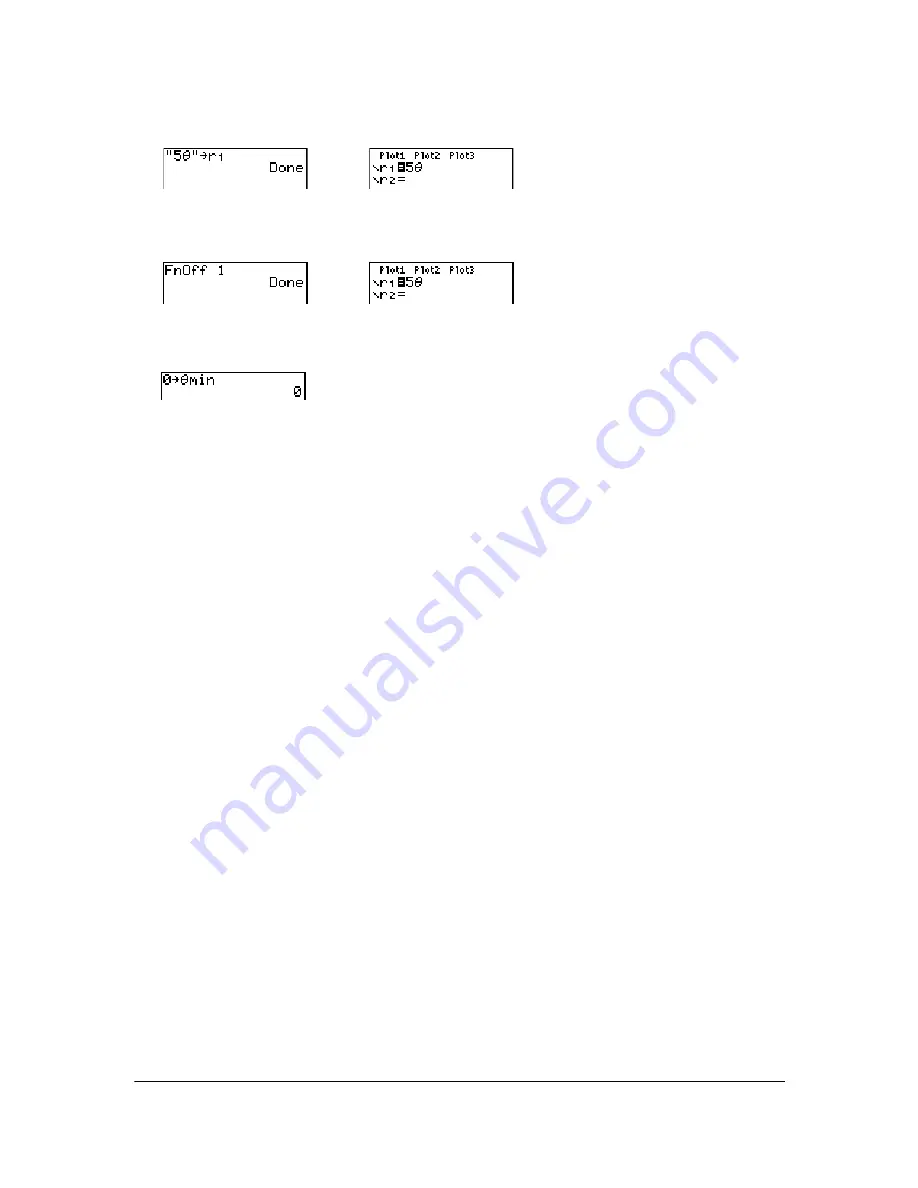
Chapter 5: Polar Graphing
100
•
Store polar equations.
•
Select or deselect polar equations.
•
Store values directly to window variables.
Exploring Polar Graphs
Free-Moving Cursor
The free-moving cursor in Pol graphing works the same as in Func graphing. In
RectGC
format,
moving the cursor updates the values of X and Y; if
CoordOn
format is selected, X and Y are
displayed. In
PolarGC
format, X, Y, R, and
q
are updated; if
CoordOn
format is selected, R and
q
are displayed.
TRACE
To activate TRACE, press
r
. When TRACE is active, you can move the trace cursor along
the graph of the equation one
q
step
at a time. When you begin a trace, the trace cursor is on the
first selected function at
q
min
. If
ExprOn
format is selected, then the equation is displayed.
In
RectGC
format, TRACE updates the values of X, Y, and
q
; if
CoordOn
format is selected, X, Y,
and
q
are displayed. In
PolarGC
format, TRACE updates X, Y, R, and
q
; if
CoordOn
format is
selected, R and
q
are displayed.
To move five plotted points at a time on a function, press
y |
or
y ~
. If you move the trace
cursor beyond the top or bottom of the screen, the coordinate values at the bottom of the screen
continue to change appropriately.
Quick Zoom is available in Pol graphing mode; panning is not.
Moving the Trace Cursor to Any Valid Theta Value
To move the trace cursor to any valid
q
value on the current function, enter the number. When you
enter the first digit, a
q
=
prompt and the number you entered are displayed in the bottom-left corner
of the screen. You can enter an expression at the
q
=
prompt. The value must be valid for the
current viewing window. When you complete the entry, press
Í
to move the cursor.

